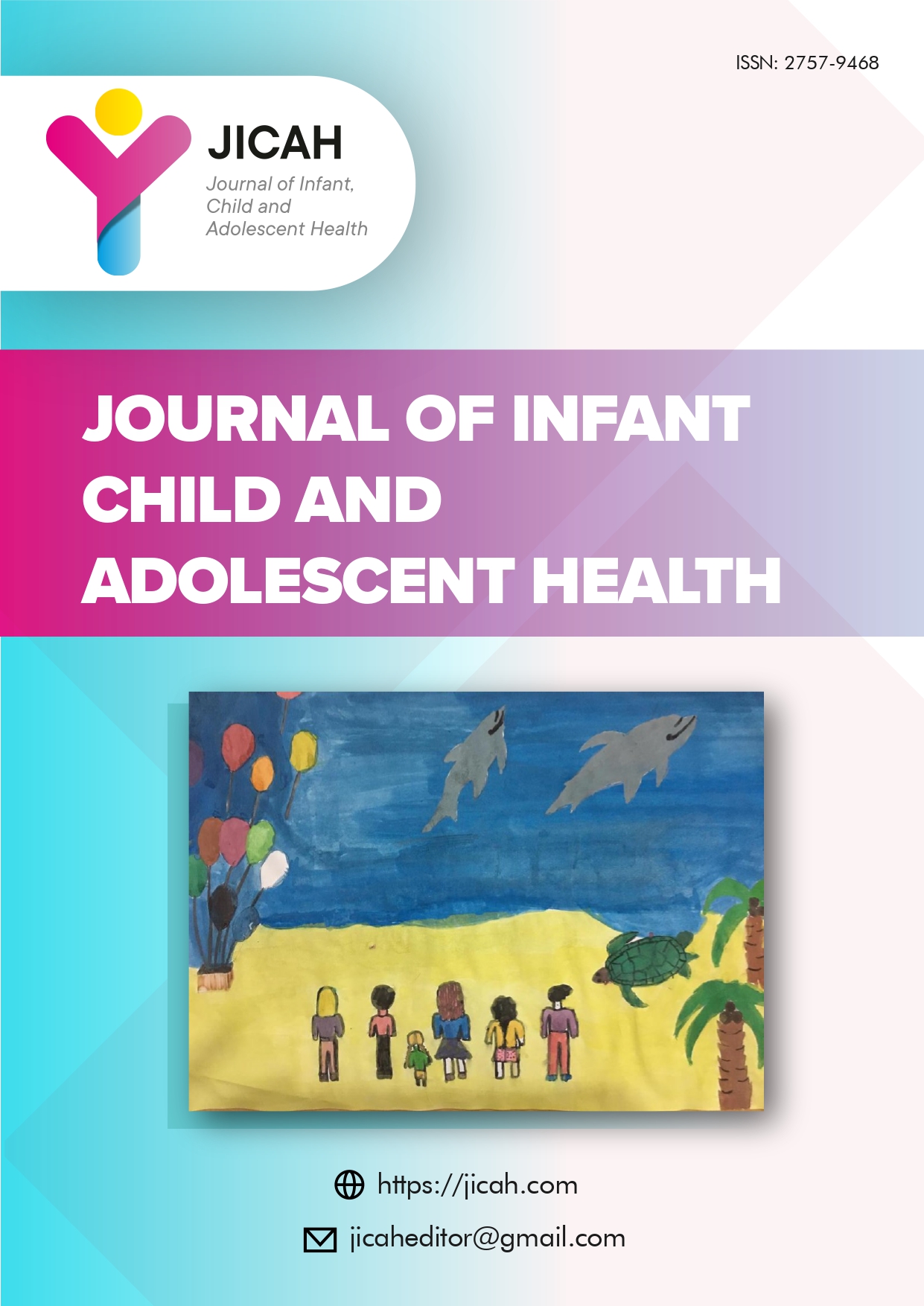Evaluation of mechanical low back pain and quality of life in caregivers of individuals with neuromuscular diseases
DOI:
https://doi.org/10.5281/zenodo.13208365Anahtar Kelimeler:
Caregiver burden, low back pain, neuromuscular diseases, paediatric patient, quality of lifeÖzet
Objective: The aim of this study was to identify variables influencing mechanical low back pain and quality of life in caregivers of children with neuromuscular diseases, and to assess the association between caregivers' mechanical low back pain and quality of life.
Method: This cross-sectional study was conducted in the Muscular Diseases Center of an institute. Between February and July 2019, caregivers of the Muscle Disease Unit were included in the study. Caregivers' Visual Analogue Score (VAS), Functional Ambulation Scale (FAS) and pain treatment status, Revised Oswestry Low Back Pain Disability Questionnaire (ODI), and SF-36 Quality of Life Scale were evaluated using chi-squared and correlation analysis.
Results: The prevalence of low back pain among caregivers was 81.5% (n=135). The participants' VAS and Oswestry scores were 6.1 and 27.4, respectively. Dependency increased with age and duration of diagnosis. There was a positive correlation between caregivers' VAS and ODI scores. SF-36 scores were lower than average.
Conclusion: Neuromuscular diseases are chronic, progressive, often incurable and cause significant problems for paediatric patients and caregivers. As caregiver burden and back pain increase, caregivers' quality of life decreases. Multidisciplinary teams should be established to help caregiver cope with the difficulties.
Referanslar
Alahan, N. A., Avlaz, R., & Yetiş, G. (2015). Kronik hastalığı olan çocuğa sahip ebeveynlerin bakım verme yükü. Annals of Health Science Research, 4(2), 1-5.
Altuntaş, O., & Aydın, M. (2015). Huzurevinde çalışan bakım verenlerde bel okulunun etkinliğinin incelenmesi. Ergoter ve Rehabil Derg., 3(1), 1–6.
Bahadır Yılmaz, E., & Ata, E. E. (2017). Determining the relation between caregiver burden for individuals having neurological disease and their coping ways with stress. J Psychiatr Nurs, 8(3), 145–149. https://doi.org/10.14744/phd.2017.77699
Bekiroğlu, S., & Gökçearslan Çifci, E. (2017). Nöromüsküler hasta ailelerinin yaşadıkları güçlükler. Türkiye Sosyal Araştırmalar Dergisi, 21(3), 704–722. https://doi.org/10.20296/tsadergisi.322808
Bijur, P. E., Silver, W., & Gallagher, J. (2001). Reliability of the visual analog scale for measurement of acute pain. Acad Emerg Med., 8(12), 1153. https://doi.org/10.1111/j.1553-2712.2001.tb01132.x
Birnkant, D., Bushby, K., Bann, C. M., et al. (2018). Diagnosis and management of Duchenne muscular dystrophy, part 2: respiratory, cardiac, bone health, and orthopaedic management. Lancet Neurology, 17(4), 347-361. https://doi.org/10.1016/S1474-4422(18)30025-5
Duggleby, W., Williams, A., Ghosh, S., Moquin, H., Ploeg, J., Markle-Reid, M., & Peacock, S. (2016). Factors influencing changes in health related quality of life of caregivers of persons with multiple chronic conditions. Health Qual Life Outcomes, 14(81). https://doi.org/10.1186/s12955-016-0486-7
Fairfax, A., Brehaut, J., Colman, I., et al.; Canadian Inherited Metabolic Diseases Research Network. (2019). A systematic review of the association between coping strategies and quality of life among caregivers of children with chronic illness and/or disability. BMC Pediatr., 19(1), 215. https://doi.org/10.1186/s12887-019-1587-3
Fırıncı, B., Pehlivan, E., Durmuş, G. N., & Özer, A. (2018). Hasta bakıcılarda bel ağrısı ve yaşam kalitesinin değerlendirilmesi, Turgut Özal Tıp Merkezi örneği. Sakarya Tıp Dergisi, 8(2), 292-302. https://doi.org/10.31832/smj.411881
Gül, A., Üstündağ, H., Kahraman, B., & Purisa, S. (2014). Hemşirelerde kas iskelet ağrılarının değerlendirilmesi. Sağlık Bilimleri ve Meslekleri Dergisi, 1(1), 1-10. https://doi.org/10.17681/hsp.77225
Karabudak, R. (2014). Nöromusküler Hastalıklar. Türk Nöroloji Derneği. https://noroloji.org.tr/TNDData/Uploads/files/n%C3%B6rom%C3%BCsk%C3%BCler%20hastal%C4%B1klar.pdf
Karahan, A., & Islam, S. (2013). A comparison study about caregiver burden between physically disabled, pediatric and geriatric patients. J Marmara Univ Inst Heal Sci., 1. Available from: http://www.clinexphealthsci.com/sayilar/102/buyuk/s1-s71.pdf
Koçyiğit, H., Aydemir, Ö., Fişek, G., et al. (1999). Kısa Form-36 (KF-36)’nın Türkçe versiyonunun güvenilirliği ve geçerliliği. İlaç ve Tedavi Dergisi, 12, 102-106.
Kurban, V. (2018). Tokat il merkezinde 6-14 yaş aralığında engelli çocuğa sahip ailelerin yaşam kalitesinin değerlendirilmesi ile yaşam kalitesini etkileyen faktörlerin belirlenmesi. Gaziosmanpaşa Üniversitesi Tıp Fakültesi. https://acikbilim.yok.gov.tr/handle/20.500.12812/255371
Landfeldt, E., Lindgren, P., Bell, C. F., et al. (2016). Quantifying the burden of caregiving in Duchenne muscular dystrophy. J Neurol., 263(5), 906–915. https://doi.org/10.1007/s00415-016-8080-9
Latina, R., Petruzzo, A., Vignally, P., Cattaruzza, M. S., Vetri Buratti, C., Mitello, L., Giannarelli, D., & D'Angelo, D. (2020). The prevalence of musculoskeletal disorders and low back pain among Italian nurses: An observational study. Acta Biomed., 91(12-S), e2020003. https://doi.org/10.23750/abm.v91i12-S.10306
Ortega, J., Vázquez, N., & Amayra Caro, I. (2023). Quality of life of Latin-American people with neuromuscular disorders and their families during the COVID-19 pandemic. Adv Neurodev Disord., 8, 1-7. https://doi.org/10.1007/s41252-023-00328-3
Özdinçer, S. (2002). Nöromüsküler hastalıklı çocukların evde bakım gereksinimleri, ailelerin evde bakımda yaşadığı güçlükler ve olanakları. Marmara Üniversitesi. https://katalog.marmara.edu.tr/veriler/yordambt/cokluortam/E/E/D/D/B/T0047646.pdf
Sherpa, P. D., Kitrungrote, L., & Sae-Sia, W. (2018). Predicting quality of life among family caregivers of people with spinal cord injury having chronic low back pain in Nepal: A cross-sectional pilot study. Spinal Cord Ser Cases, 4(1). https://doi.org/10.1038/s41394-018-0110-7
Tong, H. C., Haig, A. J., Nelson, V. S., et al. (2003). Low back pain in adult female caregivers of children with physical disabilities. Arch Pediatr Adolesc Med., 157(11), 1128. https://doi.org/10.1001/archpedi.157.11.1128
Türe, E. (2018). Kronik hasta çocuklara bakım verenlerin bakım verme yükünün değerlendirilmesi. Bozok Tıp Dergisi, 8, 46-53. https://doi.org/10.16919/bozoktip.403880
Williams, G. (2011). Functional ambulation classification. In: Kreutzer, J. S., DeLuca, J., & Caplan, B. (Eds.), Encyclopedia of Clinical Neuropsychology (pp. 1105–1106). New York, NY, USA: Springer.
World Health Organization. (1996). Cancer Pain Relief with a Guide to Opioid Availability (2nd ed.). Geneva, Switzerland: World Health Organization. https://apps.who.int/iris/handle/10665/37896
Yakut, E., Düger, T., & Öksüz, Ç. (2004). Validation of the Turkish version of the Oswestry Disability Index for patients with low back pain. Spine, 29(5), 581–585. https://doi.org/10.1097/01.brs.0000113869.13209.03
İndir
Yayınlanmış
Nasıl Atıf Yapılır
Sayı
Bölüm
Lisans
Telif Hakkı (c) 2024 Journal of Infant, Child and Adolescent Health

Bu çalışma Creative Commons Attribution 4.0 International License ile lisanslanmıştır.



